Large, heavy equipment like HVAC units, plumbing, and gas pipes are housed on top of most commercial buildings because rooftop environments keep these important and expensive assets out of harm's way. This unique location also reduces noise pollution and maximizes internal square-footage—both of which are vital for hospitals, hotels, office buildings, and other establishments. However, the advantages of rooftop equipment are moot without a proper support system in place. Despite having excellent protective qualities, roofs are surprisingly fragile. Even something as simple as foot traffic can harm a roof’s protective outer membrane. Factor in a five-ton HVAC unit with sprawling ductwork and piping—the stakes grow exponentially higher. To preserve a building’s infrastructure and ensure the lifespan of assets, all rooftop equipment requires specialized reinforcement to evenly distribute weight, including pipe hangers and supports.
Maintaining commercial rooftop pipelines present several unique challenges for building owners. In addition to precipitation and wind, pipes can fluctuate depending on changes in temperature, which means the type of support system you choose and how that system is installed are significant determinants of success. The most common commercial rooftop support issues include:
A rooftop is already a perilous work environment for technicians. Risks associated with unstable equipment or structural damage underfoot dramatically elevate the level of danger they face. In fact, rooftop falls account for 17 percent of all work-related fatalities. According to the latest data, that equates to about 887 workers who lose their lives each year because of unstable rooftop environments.
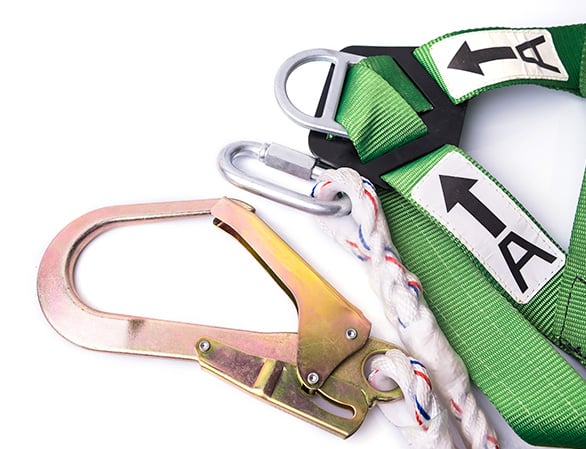
Any penetration to a roof’s protective membrane creates a weak point that even sealants and flashing can’t fully protect from consistent exposure to UV rays, water, snow, and ice. If water-damaged areas go undetected, the spread of mold and mildew can quickly turn into a health problem or structural damage. Leaks can also permeate interior walls, corrode electrical wiring, and result in unplanned downtime, irreparable damage to equipment, or even fires.
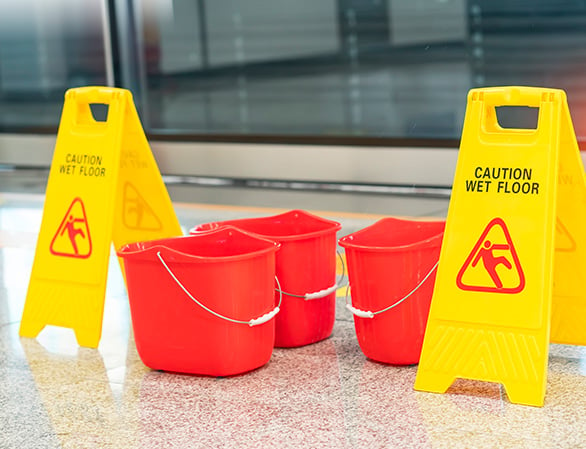
Exposure to wind is unavoidable on a rooftop. However, consistently high winds that batter improperly supported equipment can cause wind buffeting, a noisy and potentially damaging issue for equipment, pipes, and rooftop surfaces.

For commercial buildings in seismic zones, the threat of infrastructure damage is a constant worry. Much of the attention gets paid to a building’s foundation, but the vibrations created by an earthquake can also transfer from pipelines down into a roof’s structure, causing damage from the top down.

Pipelines will expand and contract as internal and external temperatures change, resulting in subtle movement. Without the right support system, these fluctuations can cause abrasions, instability, and even surface erosion.
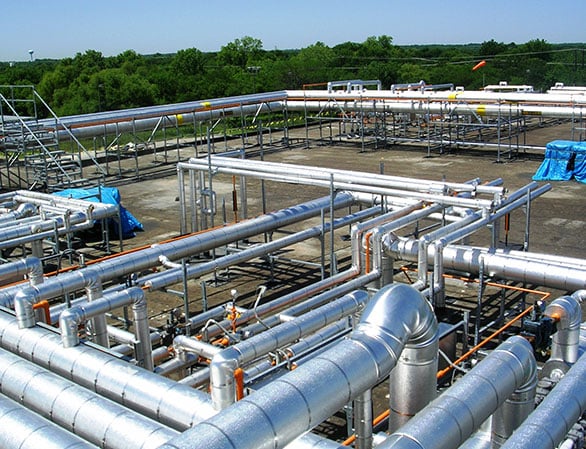
If equipment loads are not properly distributed, supports can penetrate the roof—or worse—equipment can come crashing down. Commercial roof repairs or replacements are costly and, unfortunately, if the installation of the support system involved directly penetrates the roof’s surface, there’s a good chance the roof warranty is void, leaving the building owner with the full financial burden.
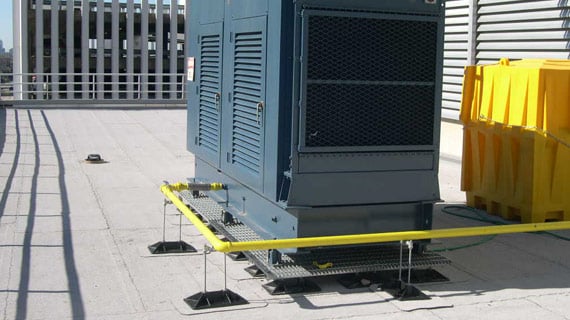
A rooftop is already a perilous work environment for technicians. Risks associated with unstable equipment or structural damage underfoot dramatically elevate the level of danger they face. In fact, rooftop falls account for 17 percent of all work-related fatalities. According to the latest data, that equates to about 887 workers who lose their lives each year because of unstable rooftop environments.

Any penetration to a roof’s protective membrane creates a weak point that even sealants and flashing can’t fully protect from consistent exposure to UV rays, water, snow, and ice. If water-damaged areas go undetected, the spread of mold and mildew can quickly turn into a health problem or structural damage. Leaks can also permeate interior walls, corrode electrical wiring, and result in unplanned downtime, irreparable damage to equipment, or even fires.

Exposure to wind is unavoidable on a rooftop. However, consistently high winds that batter improperly supported equipment can cause wind buffeting, a noisy and potentially damaging issue for equipment, pipes, and rooftop surfaces.

For commercial buildings in seismic zones, the threat of infrastructure damage is a constant worry. Much of the attention gets paid to a building’s foundation, but the vibrations created by an earthquake can also transfer from pipelines down into a roof’s structure, causing damage from the top down.

Pipelines will expand and contract as internal and external temperatures change, resulting in subtle movement. Without the right support system, these fluctuations can cause abrasions, instability, and even surface erosion.

If equipment loads are not properly distributed, supports can penetrate the roof—or worse—equipment can come crashing down. Commercial roof repairs or replacements are costly and, unfortunately, if the installation of the support system involved directly penetrates the roof’s surface, there’s a good chance the roof warranty is void, leaving the building owner with the full financial burden.

A rooftop is already a perilous work environment for technicians. Risks associated with unstable equipment or structural damage underfoot dramatically elevate the level of danger they face. In fact, rooftop falls account for 17 percent of all work-related fatalities. According to the latest data, that equates to about 887 workers who lose their lives each year because of unstable rooftop environments.

There are numerous types of support systems available for routing, anchoring, and distributing the weight of these sprawling pipe networks. However, not all solutions are created equal.
As discussed, direct penetration may void roof warranties and can also cause serious collateral damage. Albeit a necessary investment, commercial building owners are essentially paying for added risks.
PHP Systems/Design developed the world’s first and most advanced solution to this costly problem—a zero-penetration roof support system. Our system implements a proven method for managing the dead weight of your rooftop equipment without penetrating the roof’s surface. Beyond preserving the integrity of your roof, a zero-penetration support system is designed to handle changes in load distribution and thermal expansion without affecting the pipe, roof surface, supports, or weld joints.
Our pipe hangers and support systems are:
Investing in a rooftop support system isn’t enough. The most experienced architects and building owners understand that quality and design are paramount. So the saying goes, you get what you pay for—especially when it comes to pipe hangers and supports for rooftop equipment.
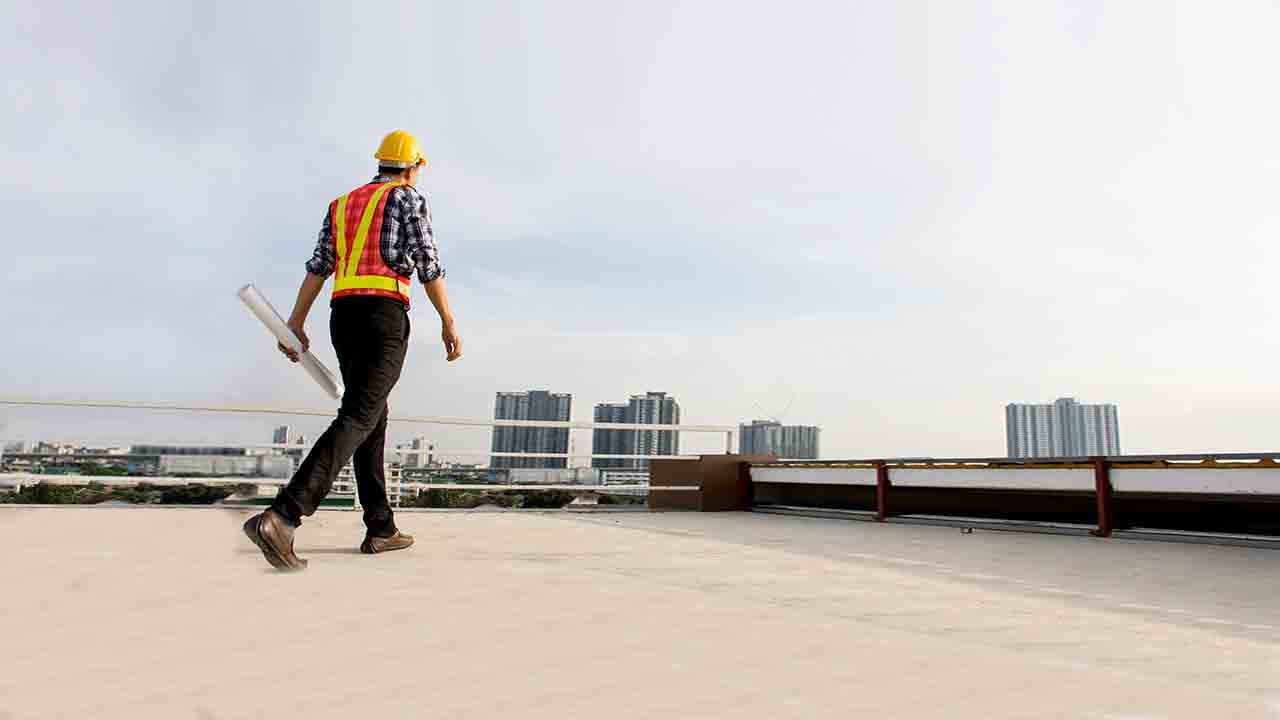
In older commercial buildings, support systems are commonly constructed of wood, metal, plastic, and rubber. These materials do not account for thermal expansion, nor do they stand up to years of exposure to UV light, wind, and precipitation. If an OSHA roofing inspector were to make an unexpected visit, these types of roof support systems could result in a fistful of costly violations.
Zero-penetration supports are constructed from carbon steel components for unsurmountable strength. All steel is hot-dipped galvanized to deliver a level of durability that even the most severe weather conditions cannot deteriorate. Each base is injection molded and specifically designed to handle the precise dead weight of pipes and equipment while allowing for variations in load distribution. By eliminating penetrations in your roof’s protective membrane and building a product that is specifically designed to outlast industry standards, we preserve rooftop warranties and reduce your total cost of ownership.
Roof support systems are not a one-size-fits-all product. Every system is customized according to the exact specifications of your roof environment and calculated using engineering tables to verify pipe-support and roof-load requirements. The most important part of the design process is making sure that the system is designed according to the building structure’s allowable load. Finally, braces and supports are selected depending on the type and size of the pipe.
Pipe hangers and supports are designed for large and small gas pipes, electrical conduit and condensate drain lines, and refrigeration lines. Choose from adjustable and non-adjustable assemblies for high- or low-profile applications, and high-wind assemblies for extreme conditions.
Adjustable
Non-Adjustable
For pipe sizes up to 2½ “ OD
Set Height: 3¼” from surface
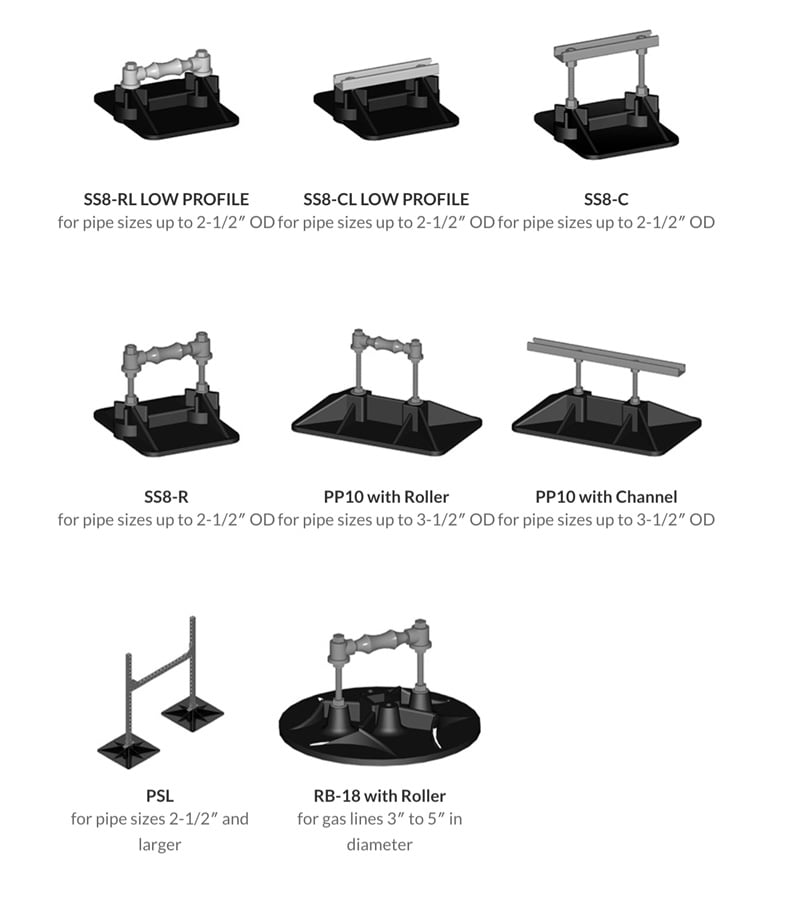
Adjustable
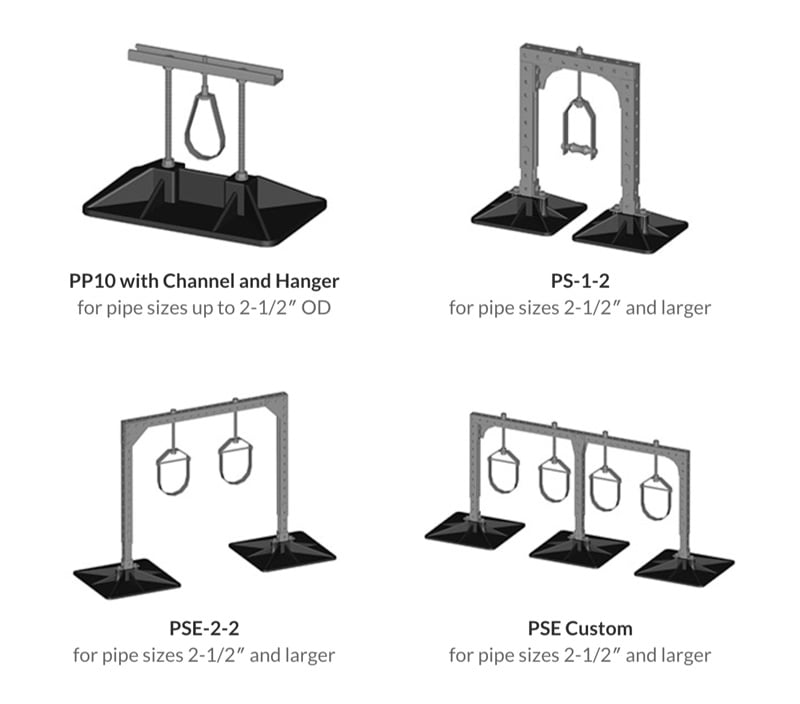
By selecting PHP Systems/Design for your pipe hangers and supports, you aren’t just preserving the value of your roof and equipment; you’re also investing in a support system that can surpass the lifespan of your building. Additionally, our supports require very little maintenance and arrive in fully assembled parts that are perfectly engineered for your unique rooftop.

PHP Systems/Design
5534 Harvey Wilson Dr.
Houston, TX 77020
Copyright 2025 PHP Systems/Design. All rights reserved.